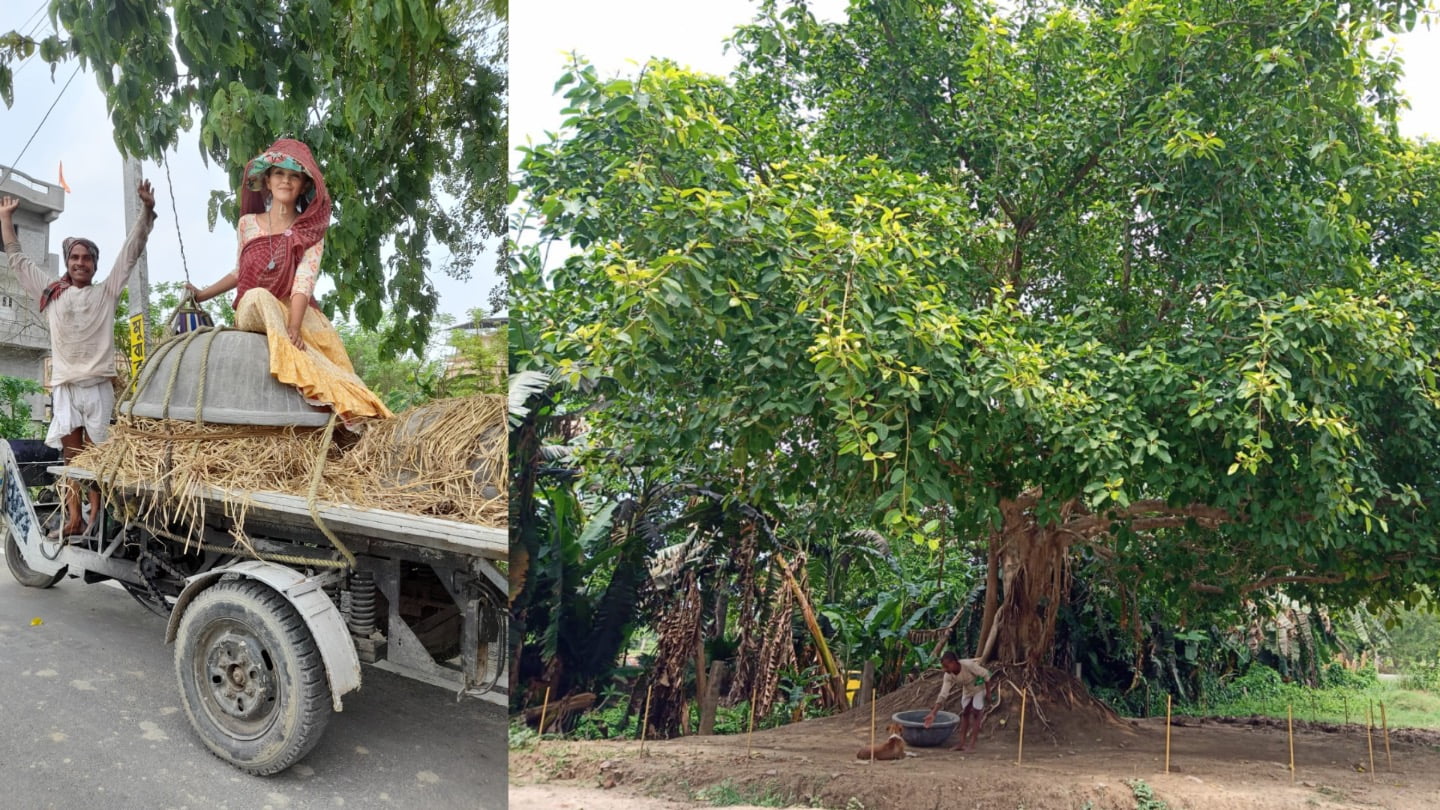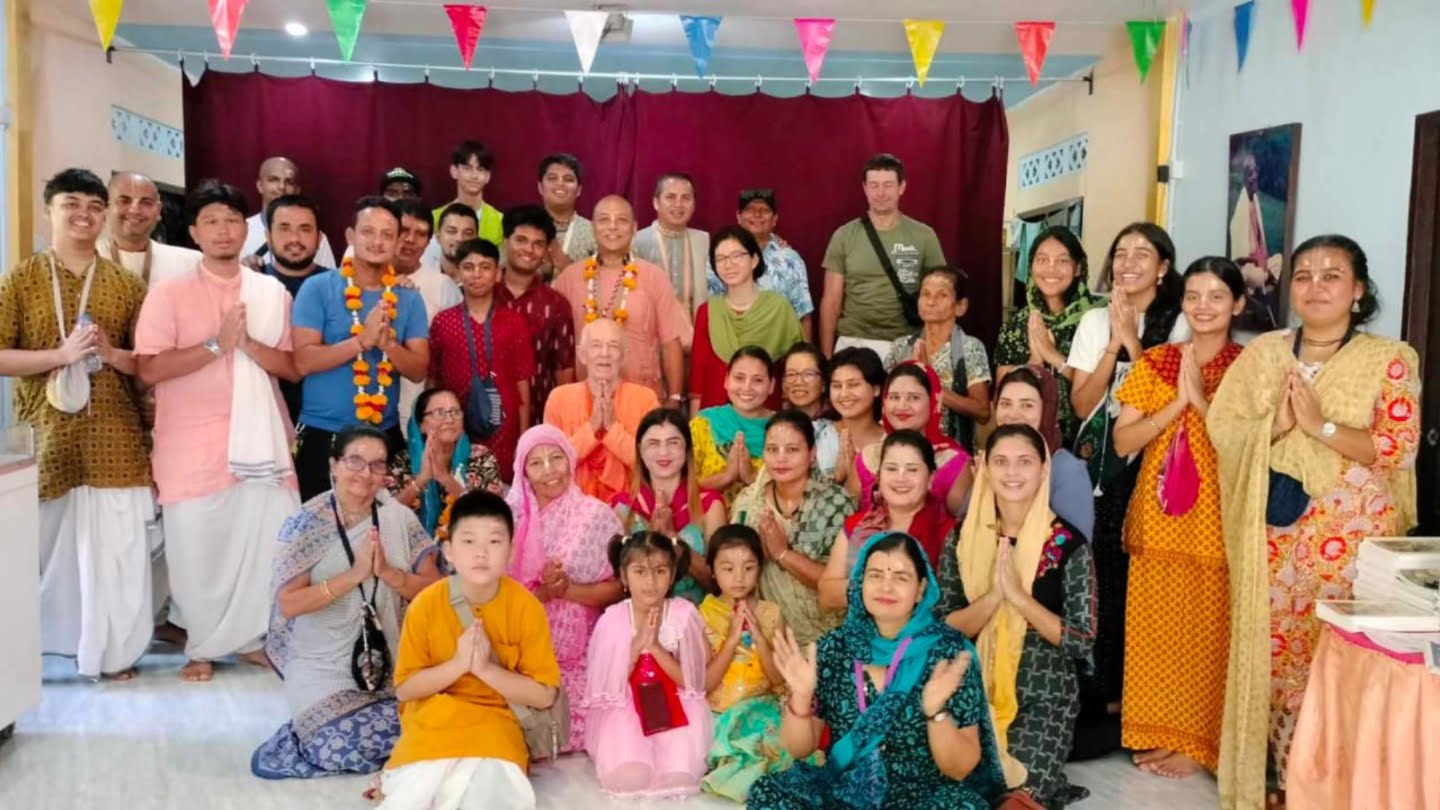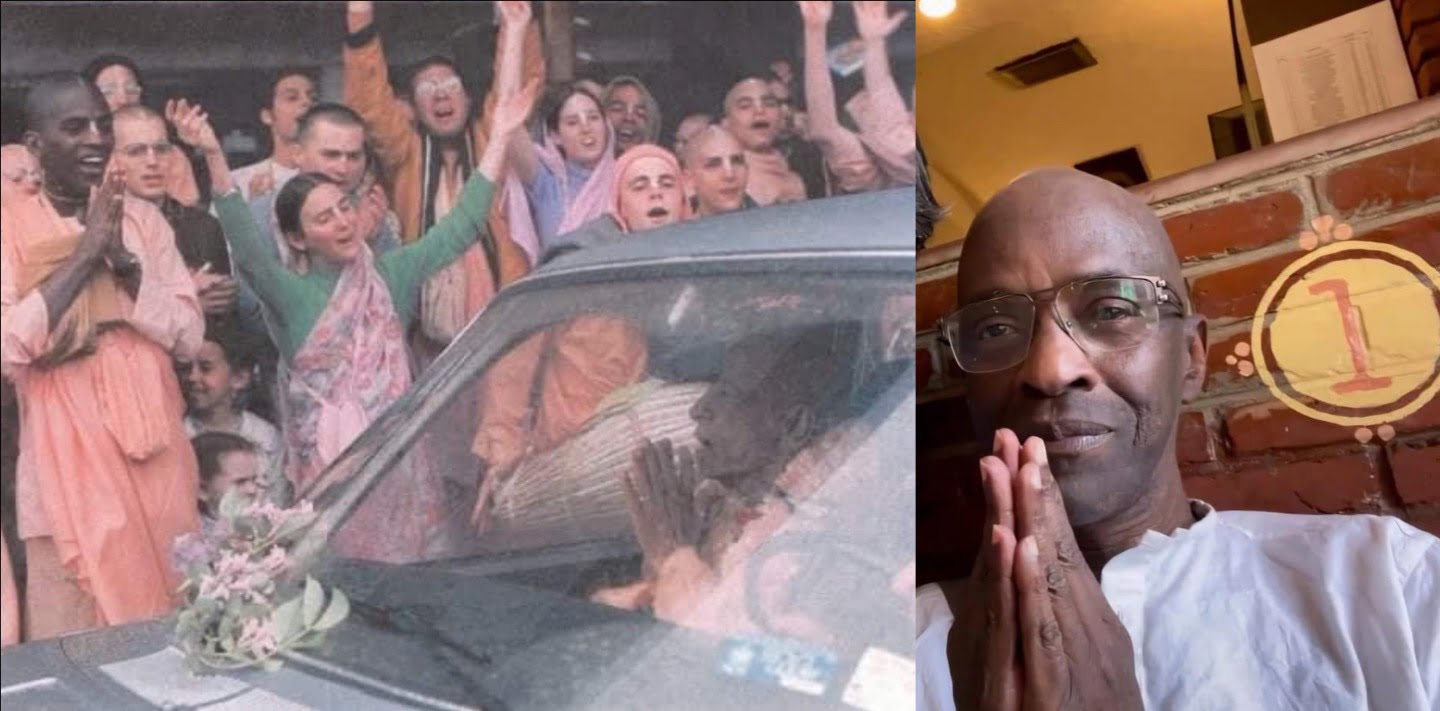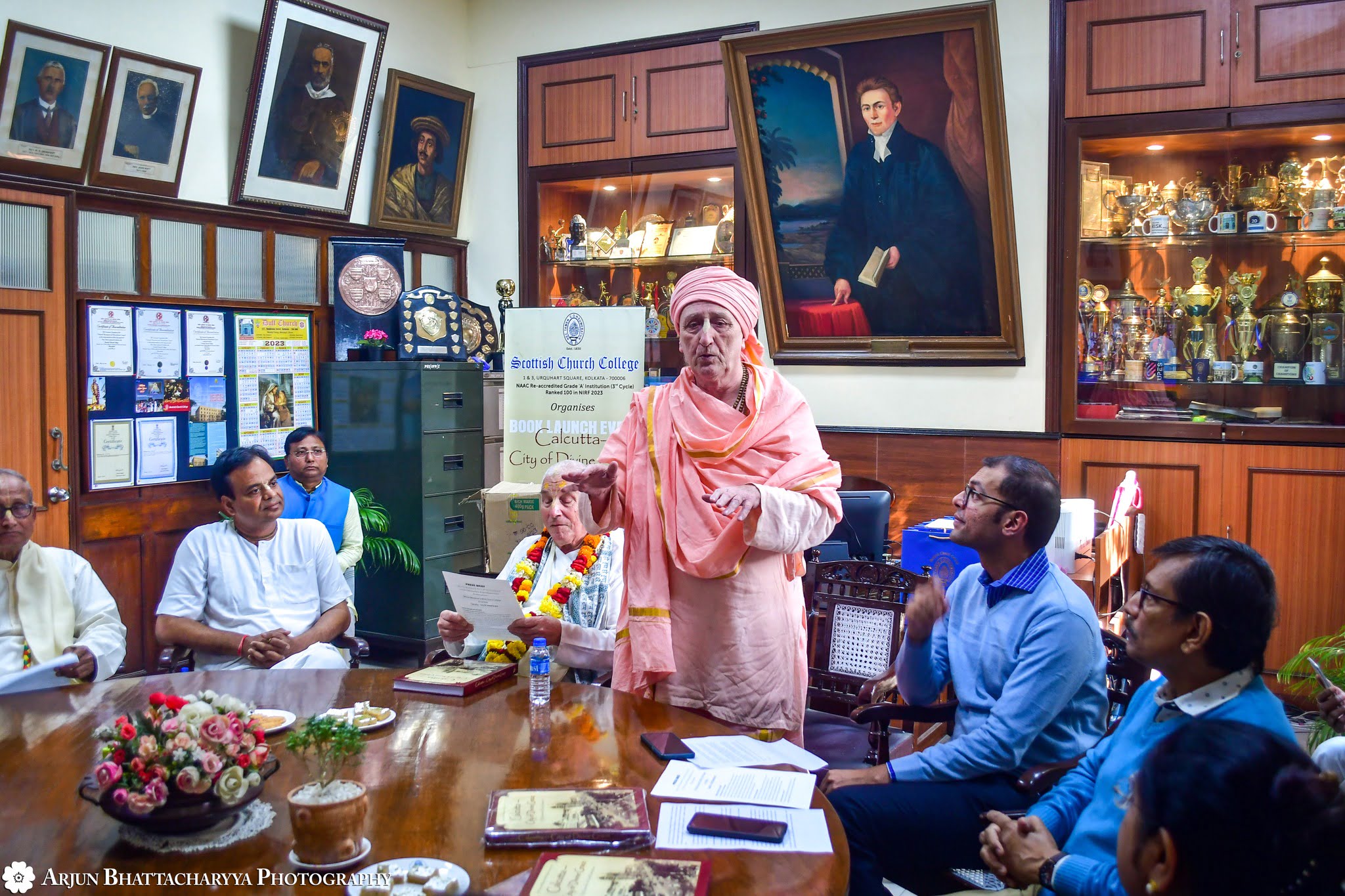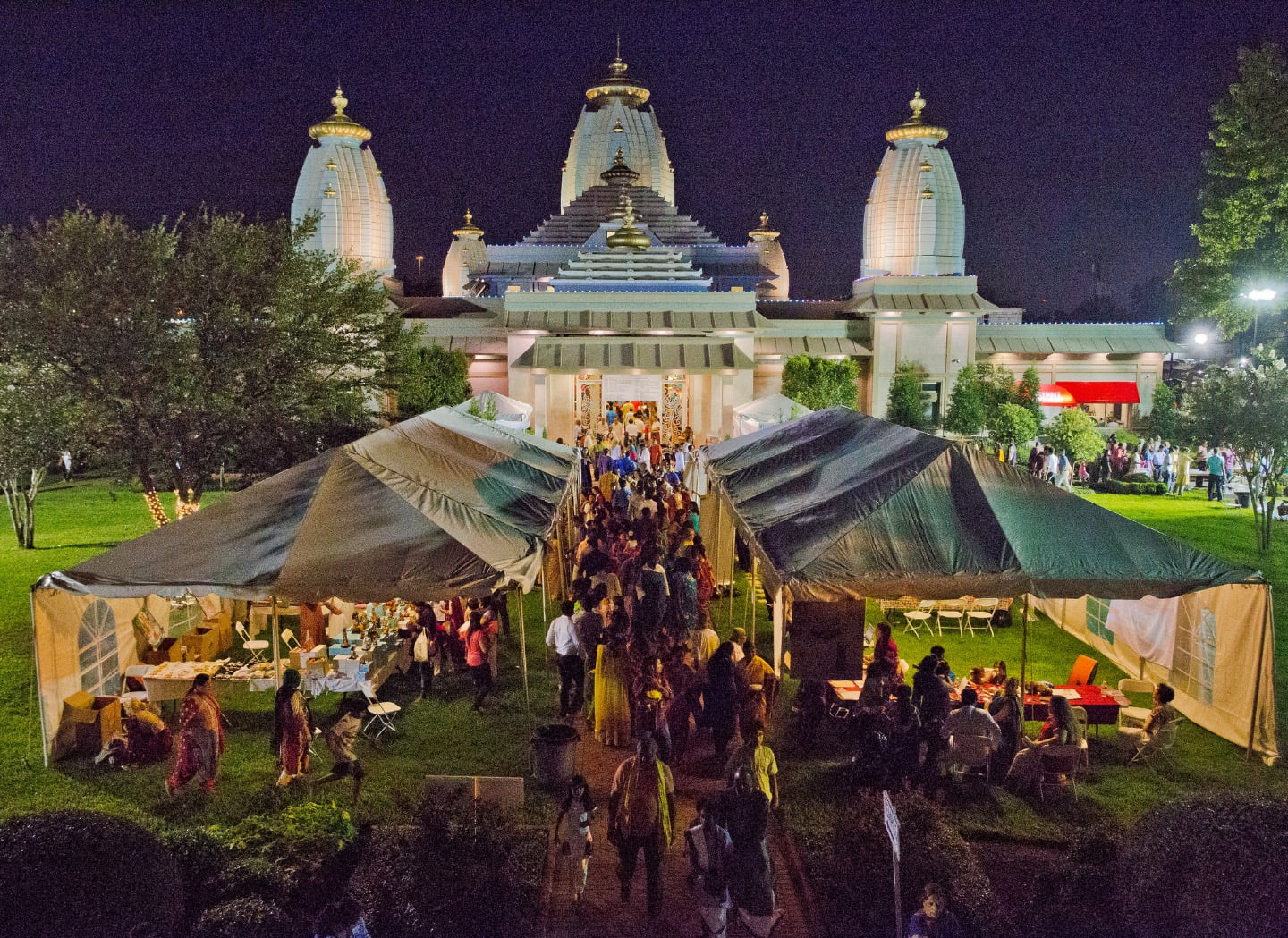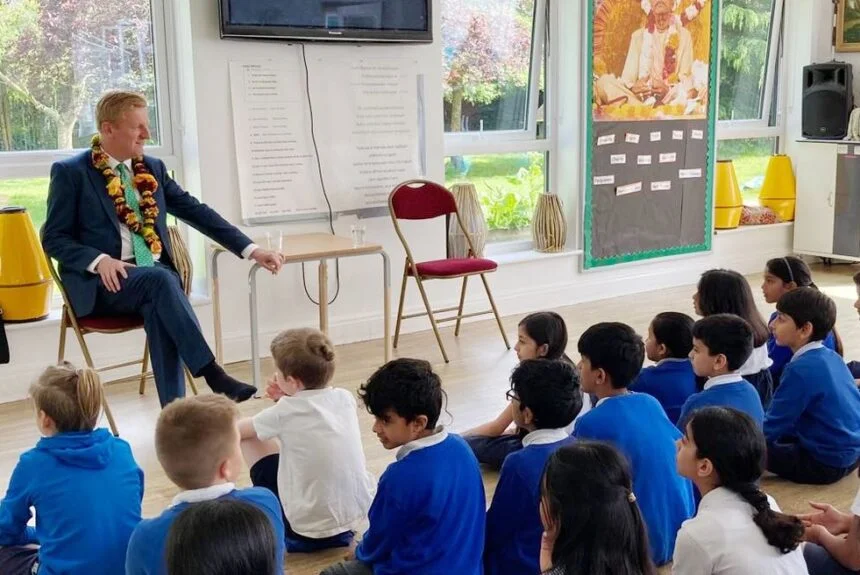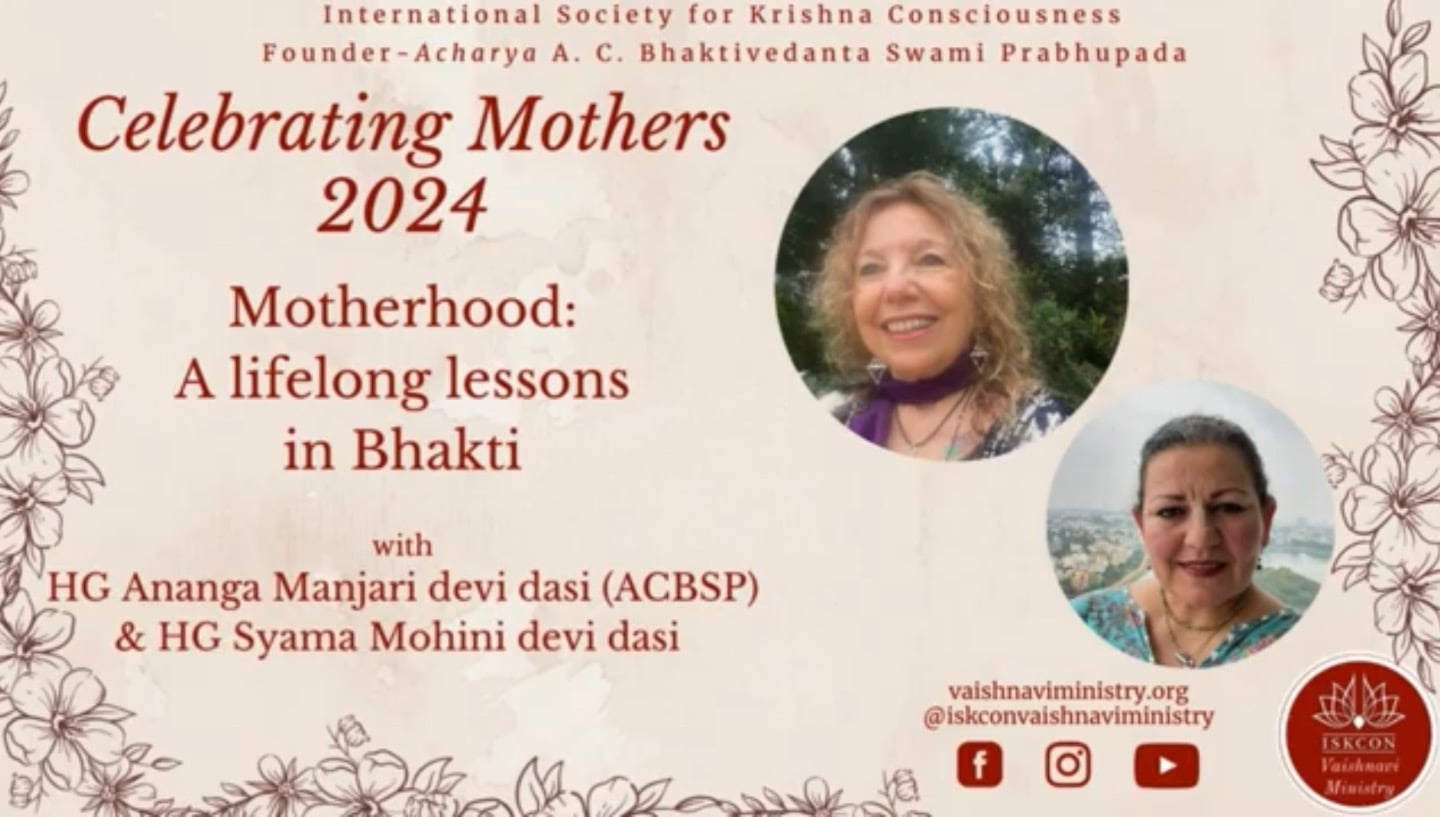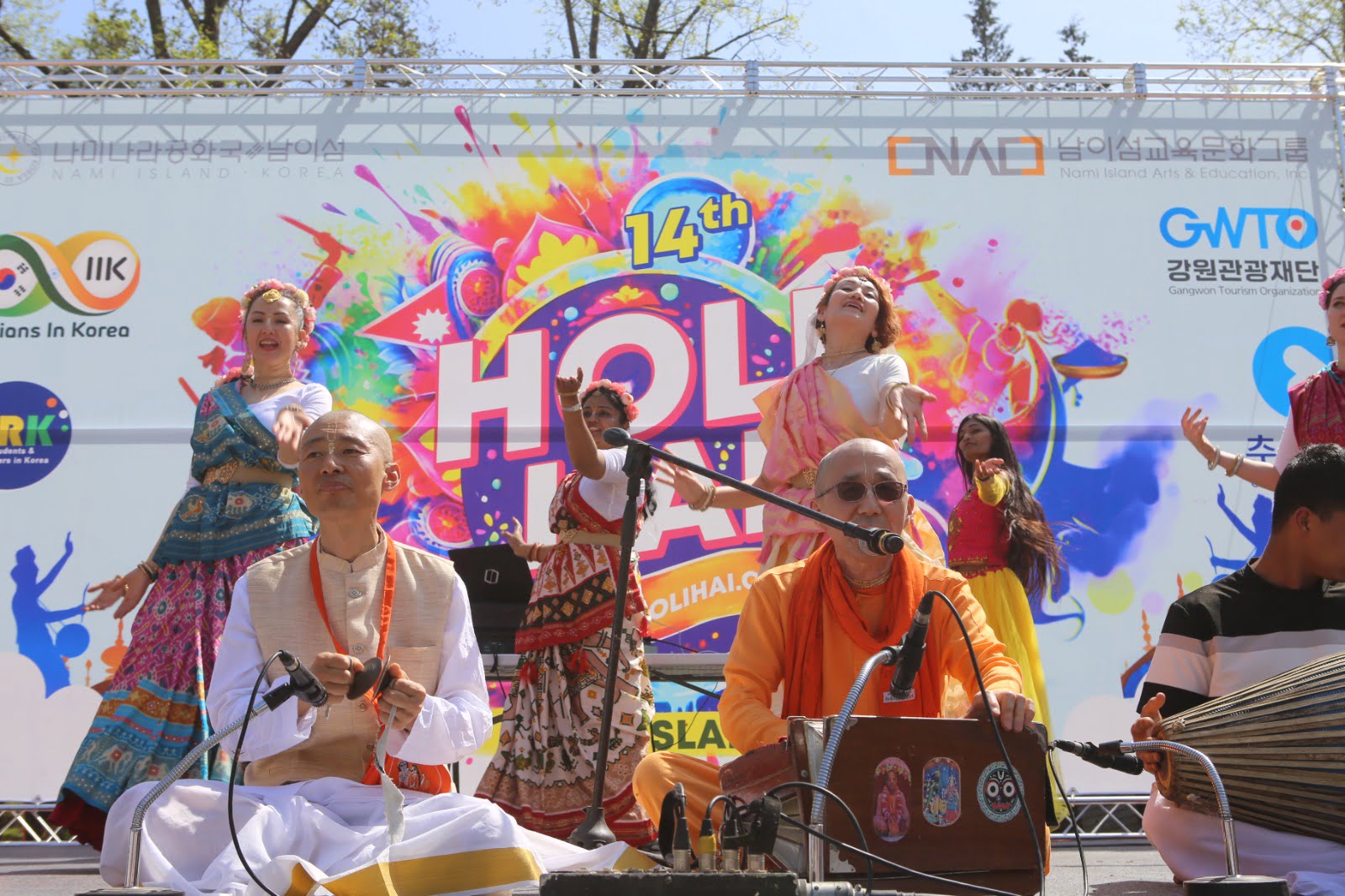Krishna Devotees March on Delhi to Save Yamuna River
By Madhava Smullen | Apr 17, 2011
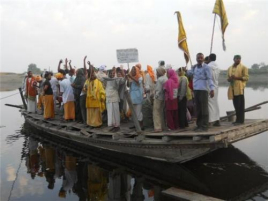
The interviews used to write this article were conducted on April 12th, three days before the culmination of the March to Save the Yamuna. While other developments may have happened since then, we have provided you with the most up to date news we can. Please check ISKCON News again later for further updates.
Thousands of sadhus, Krishna devotees, environmentalists and worshippers of the Yamuna are just completing a month-and-a-half-long march in protest of the pollution of the sacred river, culminating at the common protest ground of Jantar Mantar in Delhi on April 15th.
They are led by 74-year-old Ramesh Babaji Maharaja, head of NGO Maan Mandir, which has been at the forefront of caring for the environment of the sacred land of Braj for many years. Also assisting the march with manpower and funds are Bhanu Pratap Singh, with thousands of farmers from his Bhartiya Kisan Farmer’s Union, and ISKCON devotee and businessman Radha Jivana Dasa.
The government can do something about the horrifying condition of the Yamuna, they say, and they want results.
“The government has spent 17,000 crores of rupees—nearly four million dollars—on taking care of the Yamuna river since 1962, but still it is currently little more than a sewage drain, called ‘a dead river’ by the Ecological Department of India,” explains Radha Jivana. “In 1992, the Supreme Court brought its deteriorating condition to the government’s attention, and gave directives to maintain a certain amount of original Yamuna water in the river at all times. But this was never carried out. In fact, at one point the government came forward and apologized for neglecting this order. But they still never did anything about it.”

Radha Jivana outlines the astonishing condition the Yamuna river is in by the time it reaches the sacred land of Vrindavan, Lord Krishna’s birthplace: Emerging clean from Yamunotri, its source in the Himalayas, eighty-five per cent of it is held back by an irrigation dam in the state of Haryana, in violation of federal agreements. The remaining fifteen per cent goes to the neighboring state of Uttar Pradesh, and three per cent of that goes to Delhi, where it is all used to supply fresh water to the city.
“Then that fresh water is converted into human waste—eighteen major sewage canals are emptied into it—and finally filled with poisonous industrial waste from the Sagara industrial belt,” says Radha Jivana. “And that’s what people in Vrindavan, Mathura, and Agra get throughout the year, except for the four months of the Monsoon season when there’s a little excess fresh water. Otherwise, the Yamuna river we see in Vrindavana has absolutely zero of the source water from Yamunotri.”
As a result of this situation, many sadhus and environmentalists in Braj, as well as organizations such as the Peace Institute and the Center of Science and Environment in Delhi, have tried to help with research and action.

At the forefront has been Ramesh Babaji Maharaja, a sadhu who is supportive of ISKCON, is close friends with ISKCON guru Radhanath Swami, and even met Srila Prabhupada before he left for the West in the 1960s.
Babaji’s Maan Mandir, a non-profit organization based in Varsana, the birthplace of Krishna’s consort Srimati Radharani, has been particularly active in trying to restore Vrindavan and the surrounding Braj area in the past ten years—although Babaji himself moved to Braj at the age of seventeen and has dedicated himself to its service for the past fifty-seven years.
His organization has planted several thousand trees in the forests of Braj, restored thirty-two ponds and lakes in the area, and attemped to rejuvenate the dying culture of devotion by performing Harinama—chanting of God’s names—throughout all the local villages. In 2009, Ramesh Babaji led a protest against commercial mining in the sacred hills of Krishna’s land, and succeeded in saving 5,300 hectares of land.
So when he saw the Yamuna river in such a sorry condition, he jumped forward, deciding to organize a huge march to draw the government’s attention to it.

Stepping forward to help him was Bhanu Pratap Singh, leader of the Bhartiya Kisan Farmer’s Union, who stated he would take it upon himself as a mission to bring together the largest union in the world—with 100,000 people—to knock on the government’s door.
Another helper was Radha Jivana Dasa, an ISKCON devotee since 1978 who lived in ISKCON Mayapur for fourteen years and was involved in management there, before moving to Alachua, Florida where he currently runs his own business employing only devotees.
“From reading Srila Prabhupada’s books, I know that he holds the holy dhamas in very high esteem, and it was always my desire to be able to use my money and my body in service to the holy places,” he says. “I began to repair old temples in Vrindavan such as Radha Shyamasundar Mandir and Radha Damodar Mandir, plant trees, and distribute prasadam and blankets to the poor. Then, eight years ago, I met Ramesh Babaji, who was doing tremendous work in Braj, and joined up with him. Now, for the past seven years, I’ve helped him with projects like the mining protest, and spreading Harinama sankirtana in the surrounding villages.”
Having amassed this strong team, the March to Save the Yamuna commenced on March 1st at Allahabad, where the Yamuna meets the Ganges.
Hundreds of sadhus and members of Maan Mandir made up the core group, while the numbers swelled to thousands as they marched through towns or cities.

“People whole-heartedly supported us and would join in for a few days, because it is such a common concern—and because they have never before seen anyone come forward with such passion for the Yamuna,” says Radha Jivana. “Saints, housewives, journalists, even members of other religions, all have joined us in chanting Harinama and walking for the Yamuna.”
Sikhs promised a free feast to all the people who congregated at Jantar Mantar in Delhi for the final day of the March—no matter how many there were. Meanwhile, the head Kazi (Muslim priest) of Agra declared as the March passed through there that from that day on, no Namaz, or prayer to Allah, would be complete without mentioning the Yamuna.
“Further, he said that no marriage from that day on would be formalized without the couple first swearing that they would take care of the Yamuna river for the rest of their lives,” says Radha Jivana. “It was quite wonderful!”

When ISKCON News spoke to Radha Jivana on April 12th, he confirmed that leaders of the March were set to meet with Jairam Ramesh, Indian Minister of the Environment, on April 13th, towards the end of the March.
Next, on April 15th, the March was set to culminate at Jantar Mantar in the heart of Delhi, with thousands of protestors chanting God’s names—including ISKCON devotees from Vrindavana and Delhi’s three temples. They have resolved to remain there until the government agrees to both obey the Supreme Court injunction that they release into the river the natural Yamuna water that has been held back for irrigation; and re-route Delhi’s pollutive waste.
The marchers feel confident that a victory is imminent.

“There will definitely be some favorable negotiations by the 15th or 16th,” Radha Jivana says. “We are also trying to talk with Sonia Gandhi, president of Congress—which should help things. Because next year are the elections in Uttar Pradesh, and many voters, including the huge Farmers’ Union, are for our cause. So if the government does not work with us, we will make it a big issue, and they may loose many votes.”
ISKCON leaders can help by writing letters on behalf of their communites to the Indian government—as temple president Mukhya Dasi did for the thousand-strong Alachua congregation—or by taking photos of their international congregation outside their temples with a sign saying “Please Save and Clean our Yamuna.” These can then be sent to Radha Jivana Dasa, who can use them in campaigns and press conferences.
Meanwhile Ramesh Babaji, Radha Jivana and others continue to work towards their dream of restoring Vrindavana, Braj, and the Yamuna to their beautiful, natural splendor, fit for a home to Radha and Krishna.
“Ramesh Baba, my instructional guru in the restoration of Vrindavana, refuses donations to fix the dilapidated temple he personally runs, because he says that
all of Braj is his temple,” explains Radha Jivana. “Rather, he wants people to plant a tree in Braj, bring clean water to Braj, or protect cows in Braj. We would like to see Braj not full of cities and pollution and traffic, but full of trees, greenery, cows, and beautifully-restored kundas where Radha and Krishna performed their pastimes.”
Ultimately, however, everyone knows who will really be saving the sacred land of Braj.
“When Krishna lifted Govardhana Hill, many of the cowherd boys and men thought they were the ones holding it up, and Krishna allowed them to do so because they wanted to serve him,” says Radha Jivana. “But really, Krishna was lifting the whole thing with his little finger. In the same way, this job is already done by Lord Krishna—he has just given us an opportunity to serve him.”





